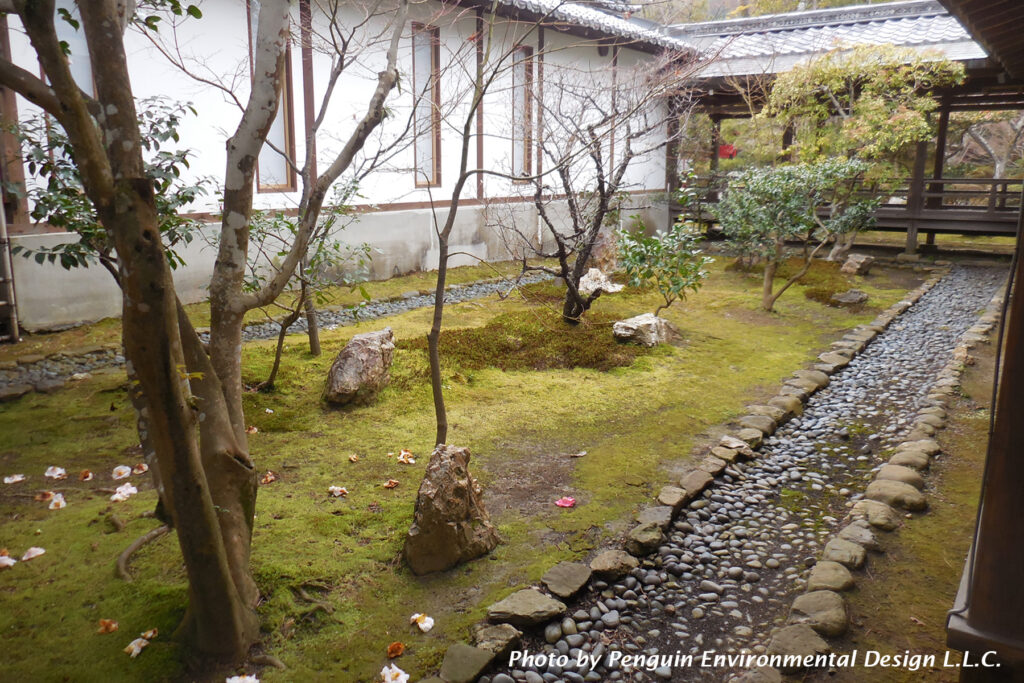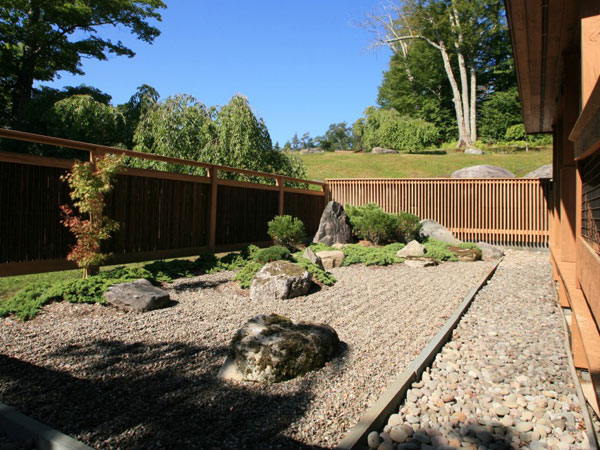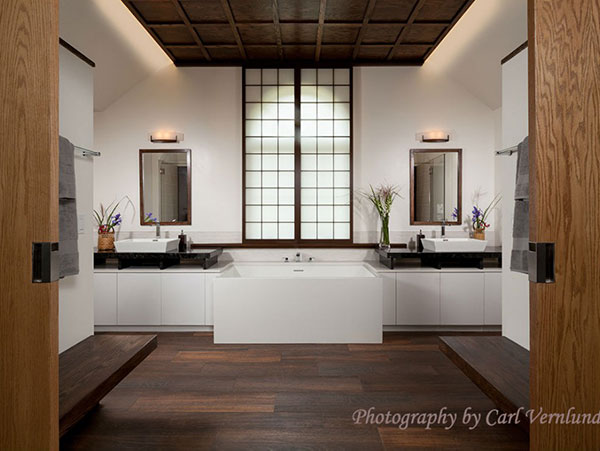I have not read The Tale of Genji because I am not a big fan of love stories although it is a famous classic novel. But now, I feel ashamed of myself after I knew that the source of the character’s names was gardens. It is because their names came from Tsubo-niwa, a specific type of Japanese garden.
Tsubo-niwa means a courtyard garden encircled by buildings in Japan. There are two ways of Chinese character writing for Tsubo-niwa. One is 坪庭. 坪 means a unit of area. For instance, one Tsubo (一坪) is 3.3 ㎡. Another is 壷庭. 壷 means a pot or vase. Both names refer to the same thing that is called a courtyard garden. The courtyard garden at aristocrats’ houses used to have the naming of 壷庭 in the Heian Era, the 8th to 12th century. This naming became unpopular as time went on. And then, the name of 坪庭 has become popular. From this name, we can imagine the tiny courtyard garden in residences in Kyoto now.

Kiritsubo and Fujitsubo, Women’s names
The female character’s names in The Tale of Genji are connected to places or flowers. The name of Lady Kiritsubo (桐壺) is a good example. Kiri means a paulownia. Lady Kiritsubo lived in Shigeisha, one of the pavilions in the emperor’s palace. Shigeisha had a courtyard with a paulownia tree. And then people called this pavilion Kiritsubo and called this lady so. Speaking of the other character, Lady Fujitsubo (藤壺), we can easily imagine why people called her. Fuji means a wisteria.
Can we imagine someone’s name is the same as the garden? Please let me know if you know something similar to this case. Anyway, the intimacy with ancient Japanese people and gardens makes me think I should read more Japanese classics.


